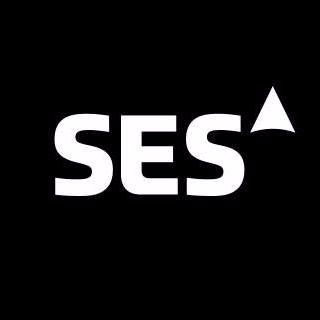Full details of SES, Intelsat deal
May 1, 2024

SES’s senior management briefed analysts after their April 30th announcement that SES would buy Intelsat in a $3.1 billion (€2.8bn) cash purchase. The deal is transformational, not just for SES and Intelsat themselves but for the industry as a whole.
However, despite some very appealing statistics and forecasts, shareholders were extremely unhappy. Its share price crashed within moments of the announcement and during the day hit an ‘all time low’ of €4.13. It recovered a little as the afternoon went on and ‘bottom feeding’ buyers realised the stock was – perhaps – at bargain basement prices. Nevertheless, in three days its shares lost 20 per cent of their value as investors realised the agreement with Intelsat meant a probable 3-5 year timetable before tangible benefits would be felt.
On the upside the purchase means that SES, once the deal wraps, will control more than 100 geostationary satellites and 26 medium Earth orbiting craft. Neither business owns a Low Earth orbiting (LEO) fleet but SES has a capacity agreement with Elon Musk’s Starlink, while Intelsat has a similar agreement with Eutelsat’s OneWeb.
Nothing was mentioned but it doesn’t need a Crystal Ball to assume that a LEO fleet could be added in the future, and perhaps – as CEO Declan Ganley has suggested – Rivada Space Networks and its 600-craft fleet could be a willing player.
Elements that did emerge from the analysts call include confirmation that the corporate HQ would stay at Betzdorf in Luxembourg. The Falls Church, near Washington, HQ of Intelsat would be maintained. However, the inevitable ‘synergy’ numbers would mean consolidation of some positions and the elimination of duplications. SES expects to deliver synergies with a total net present value (NPV) of €2.4 billion (after approximately €155 million of estimated realisation costs), representing an annual run rate of €370 million of which approximately 70 per cent is anticipated to be executed within 3 years after closing of the transaction. The NPV of the synergies is equivalent to 85 per cent of the total equity value of the transaction, while opportunities to realise further synergies will be explored before and after closing.
Most of the synergies are expected to be executed from the combination of selling, general, and administrative savings as well as optimisation of third-party capacity costs and future efficiencies in procurement of satellites. The remaining synergies will be captured from optimising the combined satellite fleets and ground infrastructure with the process expected to start soon after closing.
Other highlights for the combined businesses:
· Backlog: €9 billion
· Annual revenue: €3.8 billion
· More C-band cash from FCC: $1 billion possible
· TV Channel count: 10,000
Other posts by Chris Forrester:
- Intelsat C-band ‘insider trading’ case dismissed
- UK Space Agency funds de-orbit scheme for OneWeb
- AST SpaceMobile to launch satellites in August
- SpaceRISE silent on reports of demise
- Project Kuiper seeks India licence
- FAA suspends SpaceX launches
- SpaceX vs AST SpaceMobile
- Eumetsat explains Ariane 6 cancellation
- AST SpaceMobile examines emergency call obligations
